Bastet: Protector And Punisher – She Was Among The Most Majestic Egyptian Deities
A. Sutherland - AncientPages.com - In the mythology of the ancient Egyptians, Bastet (or Bast) was a feline goddess and one of the most loved goddesses in Egyptian history. She personified feminine beauty, grace, kindness, fun, and offenders of gods.
She had many temples and shrines to her name. She was especially revered in Bubastis (Tell Basta) in the eastern Delta, but she was also worshiped highly in Memphis, Heliopolis, and Herakliopolis.
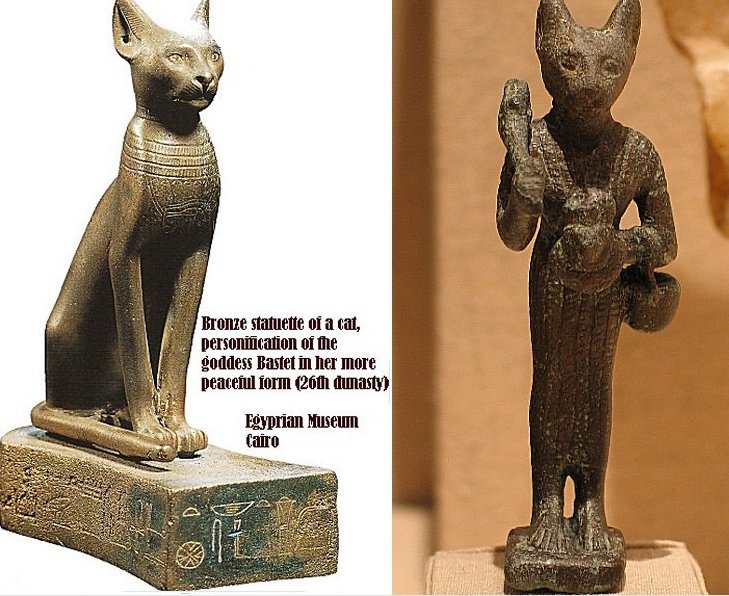 Left: Goddess Bastet; Right: The Goddess Bastet, 305-30 B.C.E. Bronze. Brooklyn Museum
Left: Goddess Bastet; Right: The Goddess Bastet, 305-30 B.C.E. Bronze. Brooklyn Museum
Originally, in earlier beliefs, during the Old Kingdom (c. 2613-2181 BC) when the capital was located in Memphis in Lower Egypt, Bastet was linked with an angry lioness goddess, Sekhmet, destructive and dangerous in nature, and predominantly depicted as a woman with a lion's head. She protected kings when they went to war and was considered a national deity of protection and Pharaoh's guardian goddess.
In the Pyramid Texts, she appeared both in her dangerous form and as a mild-natured mother and nurse of the king, and in the Coffin Texts, her role was to protect the deceased. In later tradition (the end of the second millennium BC), numerous bronze statuettes showed Bastet as a cat-headed, much friendlier deity. Sometimes, she was portrayed holding the rattle-like sistrum instrument.
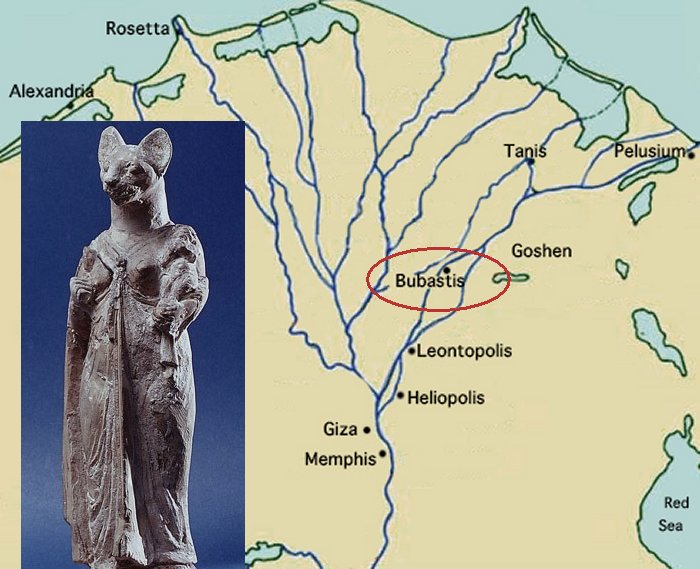 “Bastet’s demonic, terrifying aspect is mainly highlighted in the Coffin Texts and the Book of the Dead and in medical spells. The “slaughterers of Bastet” were said to inflict plague and other disasters on humanity” (G. Pinch). One spell advises pretending to be the “son of Bastet” in order to avoid catching the plague. Bastet may be the poisoned cat who is cured by Ra in a myth alluded to in another healing spell.
“Bastet’s demonic, terrifying aspect is mainly highlighted in the Coffin Texts and the Book of the Dead and in medical spells. The “slaughterers of Bastet” were said to inflict plague and other disasters on humanity” (G. Pinch). One spell advises pretending to be the “son of Bastet” in order to avoid catching the plague. Bastet may be the poisoned cat who is cured by Ra in a myth alluded to in another healing spell.
It seems, however, that both aspects of Bastet’s personality that showed her very dualistic nature (a lioness and a cat) existed simultaneously. She could be aggressive, brave, but also gentle, very soft, and caring.
The 1887 archaeological excavations of the ancient city Bubastis revealed Bastet’s main temple, the catacombs of mummified cats, and several pharaonic shrines that confirmed that even the highest royal personalities worshiped Bastet. A Twelfth Dynasty text, for example, compares an Egyptian king to Sekhmet when he punishes wrongdoers and to the goddess Bastet when he protects his loyal subjects.
Bastet’s temple was impressive, and as Herodotus said in his ' Histories’ Book II: "Other temples are greater and more costly, but none more pleasing to the eye than this..."
Bastet was widely celebrated at various festivals, which included music, dancing, sacrifices, and sistrum-playing. These events took place at the famous cult center, Bubastis located in the eastern Delta. Bastet was believed to be the daughter of the sun god and was often identified with the “Eye of Ra.”
As “the Eye of Ra who protects her father Ra,” she was a manifestation of the solar eye. Bastet was regarded as both the daughter and the consort of Atum-Ra (the sun god). Their son, Mahes (Mihos), was a lion deity.
Left: Ruins of Bubastis, which the Persians destroyed in 350 BC. Right: Wadjet-Bastet, with a lioness head, the solar disk, and the cobra that represents Wadjet. source
Occasionally Bastet was also related to the moon and called the “eye of the moon”.
As one of the most popular and the most feminine and graceful goddesses, Bastet was the personification of the feminine. After all, this goddess was revered as the protector of all women, children, and cats. People could appeal to her with any request.
She was considered to be the mother of the lion god Mahes (Miysis). She occasionally was also the mother of Nefertem, who was originally a lotus flower at the world's creation. In art, she was depicted as a beautiful young man having blue water-lily flowers around his head.
The ancient Greeks compared Bastet to their own goddess Artemis. There is a reference to Bastet in Herodotus writing, saying that women were freed from all constraints during annual festivals at Bubastis. They celebrated the festival of the goddess by drinking, dancing, making music, and displaying their genitals. During the annual festivities, the statue of the goddess was taken out of the temple and transported along the banks of the Nile.
According to Herodotus, these were the most elaborate of all the religious festivals of Egypt.
From an ancient story about Prince Setna (composed in the later first millennium BC), we learn about the erotic reputation of the worshipers of Bastet. Setna encountered Taboubu, the beautiful daughter of a priest of Bastet, and instantly fell in love with her. Taboubu agrees to meet Setna in the house of Bastet in Memphis. Before she sleeps with him, Taboubu makes the infatuated Setna sign a deed giving her all his possessions.
Setna is about to embrace Taboubu when he finds himself alone and naked on the public highway. He even lets her kill his own children and feed their bodies to cats and dogs. It has all been an illusion to punish Setna for stealing a magical book from a tomb.
In this story, the tempting Taboubu may be a manifestation of Bastet herself and her traditional role of punisher of humans who have offended the gods.
Written by – A. Sutherland - AncientPages.com Senior Staff Writer
Updated on September 1, 2021
Copyright © AncientPages.com All rights reserved. This material may not be published, broadcast, rewritten or redistributed in whole or part without the express written permission of AncientPages.com
Expand for referencesReferences:
Hart G. A Dictionary of Egyptian Gods and Goddesses
Redford, D. B. The Oxford Encyclopedia of Ancient Egypt
Pinch G. Handbook of Egyptian Mythology
More From Ancient Pages
-
 Neanderthal And Denisovan Blood Groups Deciphered And The Results Are Surprising
Archaeology | Aug 2, 2021
Neanderthal And Denisovan Blood Groups Deciphered And The Results Are Surprising
Archaeology | Aug 2, 2021 -
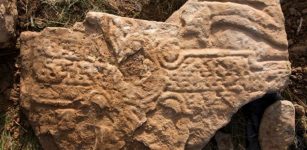 Enigmatic Stones Of The Picts: Orkney’s Unique Stone With Dragon-Like Creature And Cross Carving
Civilizations | Oct 19, 2018
Enigmatic Stones Of The Picts: Orkney’s Unique Stone With Dragon-Like Creature And Cross Carving
Civilizations | Oct 19, 2018 -
 Daily Life Of A Lady In Waiting – A Dangerous Profession Sometimes
Ancient History Facts | Aug 24, 2023
Daily Life Of A Lady In Waiting – A Dangerous Profession Sometimes
Ancient History Facts | Aug 24, 2023 -
 Egyptian Gods’ Battle For Ancient Rome – Apis And Isis Cult Against Christianity
Ancient History Facts | Feb 9, 2018
Egyptian Gods’ Battle For Ancient Rome – Apis And Isis Cult Against Christianity
Ancient History Facts | Feb 9, 2018 -
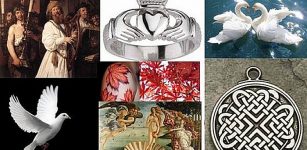 10 Ancient Love Symbols
Ancient Symbols | Jan 5, 2016
10 Ancient Love Symbols
Ancient Symbols | Jan 5, 2016 -
 Pre-Columbian Societies Declined 2,000 Years Ago Due To Sea Level Fall
Archaeology | Dec 22, 2021
Pre-Columbian Societies Declined 2,000 Years Ago Due To Sea Level Fall
Archaeology | Dec 22, 2021 -
 Common Ancestor Of Neanderthals And Humans That Lived 700,000 Years Ago Holds Clues To A DNA Mystery
Archaeology | Feb 22, 2023
Common Ancestor Of Neanderthals And Humans That Lived 700,000 Years Ago Holds Clues To A DNA Mystery
Archaeology | Feb 22, 2023 -
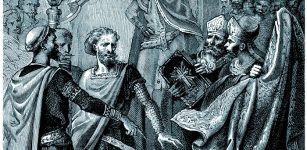 William The Conqueror: Ruthless And Powerful Ruler Who Changed Britain Forever
Featured Stories | Feb 25, 2023
William The Conqueror: Ruthless And Powerful Ruler Who Changed Britain Forever
Featured Stories | Feb 25, 2023 -
 London’s Underground Rivers Were Deliberately Hidden
Featured Stories | Oct 8, 2018
London’s Underground Rivers Were Deliberately Hidden
Featured Stories | Oct 8, 2018 -
 Rare Pre-Columbian Archaic Settlement Discovered In The Dominican Republic May Solve A Caribbean Mystery
Archaeology | Apr 12, 2022
Rare Pre-Columbian Archaic Settlement Discovered In The Dominican Republic May Solve A Caribbean Mystery
Archaeology | Apr 12, 2022 -
 Why Are There No Unicorn Fossils In A Museum?
Archaeology | Mar 17, 2023
Why Are There No Unicorn Fossils In A Museum?
Archaeology | Mar 17, 2023 -
 9,000-Years-Old Underwater Artifacts Found Off The Western Australia Pilbara Coast – Protect Flying Foam Passage Scientists Say
Archaeology | Jun 27, 2023
9,000-Years-Old Underwater Artifacts Found Off The Western Australia Pilbara Coast – Protect Flying Foam Passage Scientists Say
Archaeology | Jun 27, 2023 -
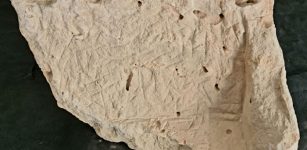 3,500-Year-Old Stone Inscribed With A Curse Against The City’s Governor Discovered In Jerusalem
Archaeology | Jul 13, 2022
3,500-Year-Old Stone Inscribed With A Curse Against The City’s Governor Discovered In Jerusalem
Archaeology | Jul 13, 2022 -
 Islands Of The Tropical Pacific Ocean Were Settled Much Earlier Than Previously Thought – New Theory
Archaeology | Dec 20, 2022
Islands Of The Tropical Pacific Ocean Were Settled Much Earlier Than Previously Thought – New Theory
Archaeology | Dec 20, 2022 -
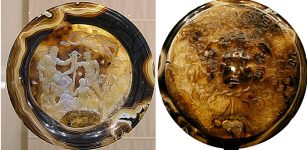 Tazza Farnese (Farnese Cup) – Mysterious, Never Explained And Debated Ancient Gemstone
Artifacts | Aug 31, 2022
Tazza Farnese (Farnese Cup) – Mysterious, Never Explained And Debated Ancient Gemstone
Artifacts | Aug 31, 2022 -
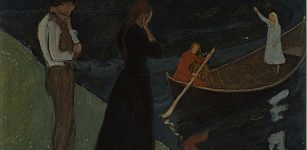 Tuonela – The Land Of The Dead In Beliefs Of Ancient Finnish People
Featured Stories | Nov 9, 2021
Tuonela – The Land Of The Dead In Beliefs Of Ancient Finnish People
Featured Stories | Nov 9, 2021 -
 Hopi’s Encounter With Maasaw – The Skeleton Man And His Gift Of Sacred Knowledge
Myths & Legends | May 5, 2017
Hopi’s Encounter With Maasaw – The Skeleton Man And His Gift Of Sacred Knowledge
Myths & Legends | May 5, 2017 -
 Underwater Nabataean Temple With Marble Altars Discovered In Pozzuoli
Archaeology | Apr 12, 2023
Underwater Nabataean Temple With Marble Altars Discovered In Pozzuoli
Archaeology | Apr 12, 2023 -
 Mysterious Death Of 20 Celts Who Died 2,000 Years Ago In The Three Lakes, Switzerland – Re-Examined
Archaeology | Jun 17, 2024
Mysterious Death Of 20 Celts Who Died 2,000 Years Ago In The Three Lakes, Switzerland – Re-Examined
Archaeology | Jun 17, 2024 -
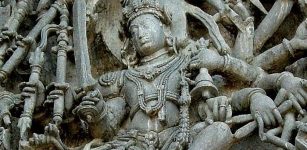 Chennakeshava Temple In Belur Is Richly Decorated With Scenes From Ramayana Mahabharata And Puranas
Featured Stories | Nov 18, 2021
Chennakeshava Temple In Belur Is Richly Decorated With Scenes From Ramayana Mahabharata And Puranas
Featured Stories | Nov 18, 2021

